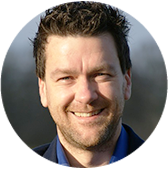Neuro Meditation
Conveniently located to serve the areas of Santa Monica, Venice, South Bay, Brentwood, Beverly Hills, Pasadena and all of Greater Los Angeles
Neuro meditation is a powerful practice that combines the principles of neuroscience and the ancient practice of meditation to promote well-being and optimize brain function. The concept and methods of meditation have been part of numerous cultures and religions for several centuries. Now, with the neurofeedback technology of qEEG (Quantitative Electroencephalography) brain mapping, you can gain insight into your brainwaves at any given state of mind. Gaining this knowledge of yourself alongside the therapeutic effects of traditional meditation can improve your productivity, help you cope with life’s daily stressors, and embrace a more positive attitude towards personal and professional challenges. Not only that, but children can benefit from neuro meditation as well; it can support their learning and growth during the most important times in their development.
At NeuroZone, located in Playa Del Rey, Redondo Beach, and Santa Monica, we offer a comprehensive range of neuro meditation techniques that cater to individual needs and conditions. Our practices are led by the expertise and training of Erin Badour, a neurofeedback specialist board-certified by the Biofeedback Certification International Alliance (BCIA). With her wealth of experience, many clients have found long-lasting relief from symptoms of ADHD, PTSD, depression, anxiety, phobias, and much more.
To find out how neuro meditation can benefit your life, call us at (310) 821-3640 or use our online form to schedule your free consultation today. A member of our staff will gladly assist you and explain the basics of this revolutionary practice.
Contents
The QEEG Brain Map
A brain map is a summary of the electrical signals your brain produces. In every waking (or sleeping) state, there are specific brainwaves to match it. During a qEEG test, your NeuroZone specialist will first attach a head cap with non-invasive electrodes to your head. Then, they will turn on the connected computer software that will pick up and record your brainwaves. During your session, you will likely shift between exhibiting different brainwaves, mostly depending on your emotions and thoughts.
- Delta waves are the slowest brain waves that are most noticeable on a brain map if the person is completely unconscious.
- Theta waves are associated with calm, hypnotic relaxation.
- Alpha waves are usually only present during states of calm focus.
- Beta waves are most noticeable during intense focus, planning, and concentration.
- Gamma waves occur in short bursts, are the fastest brainwaves, and are associated with effortless creativity. This is what some may call the “flow” state of mind.
Your neurofeedback specialist will be able to gain a valuable understanding of your cognitive condition through multiple sessions and studying the differences between each recorded brain map. By understanding the specific brainwave patterns associated with different mental states, you can train your mind to enter a state of relaxation, focus, or creativity as desired. The overall goal is customized to the individual; for example, a person who has difficulty staying focused and on-task may exhibit an overabundance of beta waves. The specialist may then work to formulate a neuro meditation treatment plan that will provoke the brain to produce more alpha waves.
Neuro Meditation Styles
There are 4 primary neuro meditation styles designed to treat specific mental health ailments. When paired with qEEG brain maps, specialists and their clients can gain visual feedback to understand their progress:
Focus
Focus-based meditations usually call for the client to focus on a visual or auditory object or remain focused on breathing patterns. During this type of treatment, it’s vital that the client doesn’t judge themselves harshly if they get distracted. Part of the meditation is to take mindful note of the object of distraction and return to the point of focus. This allows clients more flexibility in their thinking patterns as they are learning the skill of focusing at a slow and steady pace. Studies have shown that neurofeedback-based treatments can reduce symptoms of ADHD in children as much as methylphenidate, a common medication prescribed to treat ADHD. (1) All in all, it is often prescribed to help foster:
- Increased ability to focus in school or work
- Memory improvements
- Cognitive issues related to a minor brain injury
Mindfulness
Mindfulness is one of the most popular forms of meditation that is taught by psychotherapists. It is grounded in the philosophy that meditation should be the practice of simply observing one’s surroundings, sensations, thoughts, and feelings. It is helpful in increasing the amount of theta waves. This particular method is effective for clients who need assistance in:
- Managing anxiety over the future
- Managing chronic stress
- Learning to let go of past emotions
- Increasing body awareness
- Emotional regulation
- Reducing judgment toward others
Open Heart
The open heart meditation technique is more heavily focused on evoking positive emotions and compassion toward others. This form of meditation was found to increase the amount of gamma waves during brainwave monitoring. (2)Clients who undergo open heart meditations can acquire skills to:
- Better manage depression/anxiety symptoms
- Better manage grief
- Increase their empathy
- Increase overall appreciation and gratitude for self and others
- Decrease mood swings
Quiet Mind
Quiet mind meditations are centered around a repetitive mantra that serves to improve one’s ability to focus on a healthy sense of self and understanding of others’ perspectives. It is designed to help clients:
- Practice quieting unhelpful thoughts in their mind
- Minimize negative self-talk
- Support a calm, alert state of mind
- Facilitate a better sense of spatial awareness
Virtual Reality Meditation
VR is an incredible meditative tool that NeuroZone specialists have implemented into their practices. When clients put on a VR headset, they can feel completely immersed in their virtual surroundings. For meditative purposes, your specialist can transport you to a calming, serene natural environment that supports mindful focus, gratitude, or a quiet mind. In a study of participants who underwent guided meditation, the clients who participated using VR achieved deeper relaxation. (3)
Personal Consultation
During your consultation with a neurofeedback specialist, they will speak with you about any diagnoses you may have or difficulties with attention, executive functioning, stress, and more. While listening to your concerns, they may or may not recommend neuro meditation for your specific issues.
If you are looking to optimize yourself, with or without a mental health diagnosis, you, too, can benefit from a customized meditation program at NeuroZone. If you want to begin incorporating the ancient art of meditation and make recordable progress with a science-backed qEEG device, please dial (310) 821-3640 or use our contact page to request your free consultation. We can’t wait to help support you on your journey towards a calmer, more focused, and more fulfilling life.
Corresponding Treatments
Entrainment
NeuroZone treats many clients by utilizing flashing LED lights, binaural beats, and isochronic tones to encourage the brain to produce the desired brainwaves. They are often implemented in a type of training called brainwave entrainment to regulate certain areas of the brain. They are utilized in a rhythmic fashion so brainwaves can synchronize and place the brain into a state of calmness. With this form of therapy, clients can expect:
- Increased focus
- Better mood regulation
- Increased relaxation
- More resilience against stress and negative emotions
Attention Training
Attention training is catered towards individuals who have challenges with sustaining attention and/or executive functioning. Treatments include optimizing the four types of attention through customized neurofeedback training. The areas that are addressed are sustained attention, selective attention, alternating attention, and divided attention. While attention training can be beneficial for clients with many kinds of disorders, Cogmed is a training program that is even more specialized for those with attention deficit hyperactivity disorder (ADHD). The program consists of computer-based visual and auditory exercises to expand one’s working memory abilities.
Cost of Neuro Meditation in Santa Monica
The cost of your neuro meditation training will depend on your evaluation and testing and how many sessions you require to fully benefit from the treatment. At NeuroZone, we will take the time to make sure that neuro meditation is the right choice for you, and we will educate you on the many other options available to you. This ensures that every one of our clients makes an informed decision that will help them attain the results they are looking for. You can also learn more by reading through our blog.
You will receive an accurate cost estimate at the time of your free consultation with neurofeedback specialist Erin Badour. To see what neurofeedback-based training and treatments can help you accomplish in your life, call to book at one of our locations in Playa Del Rey, Redondo Beach, or Santa Monica at (310) 821-3640 or get in touch with us online.
FAQ
Is neuro meditation effective if you have problems with focusing?
A common misconception of meditation is that you need to have the ability to focus well. One of the main principles of meditation is to acknowledge distractions during the process and allow them to come and go. With neurofeedback, your progress will be easier to track with brain mapping technology.
What type of neuro meditation is most effective for ADHD?
Focus meditation is the most calming for people with ADHD, and it allows them a space to feel distracted without judgment and strengthen focusing skills gradually.
Can neuro meditation help with depression symptoms?
Open heart neuro meditation can relieve depression symptoms by emphasizing the importance of gratitude and compassion.
References
- Enriquez-Geppert S, Smit D, Pimenta MG, Arns M. Neurofeedback as a Treatment Intervention in ADHD: Current Evidence and Practice. Current Psychiatry Reports. 2019;21(6). doi:https://doi.org/10.1007/s11920-019-1021-4
- Braboszcz C, Cahn BR, Levy J, Fernandez M, Delorme A. Increased Gamma Brainwave Amplitude Compared to Control in Three Different Meditation Traditions. Najbauer J, ed. PLOS ONE. 2017;12(1):e0170647. doi:https://doi.org/10.1371/journal.pone.0170647
- Berger L, Wood G, Silvia Erika Kober. Effects of virtual reality-based feedback on neurofeedback training performance—A sham-controlled study. Frontiers in Human Neuroscience. 2022;16. doi:https://doi.org/10.3389/fnhum.2022.952261
- Lakatos P, Gross J, Thut G. A New Unifying Account of the Roles of Neuronal Entrainment. Current Biology. 2019;29(18):R890-R905. doi:https://doi.org/10.1016/j.cub.2019.07.075





